Nội dung bài viết
RCBO is a highly effective circuit breaker, quickly handling many electrical risk cases. When compared with some other CB lines such as MCB or RCCB, RCBO has more superior features. So what exactly is an RCBO circuit breaker and how does it work? How to effectively apply RCBO in practice? KTH ELECTRIC will answer that for you.
What is RCBO? Function of RCBO
RCBO (Residual Current Circuit Overcurrent) is an anti-shock, anti-leakage circuit breaker that protects the electrical system against stray currents or incidents that cause electrical short circuits. RCBO has the ability to detect electrical leakage and immediately turn off the power, preventing leakage current from increasing in intensity and spreading to electrical equipment.
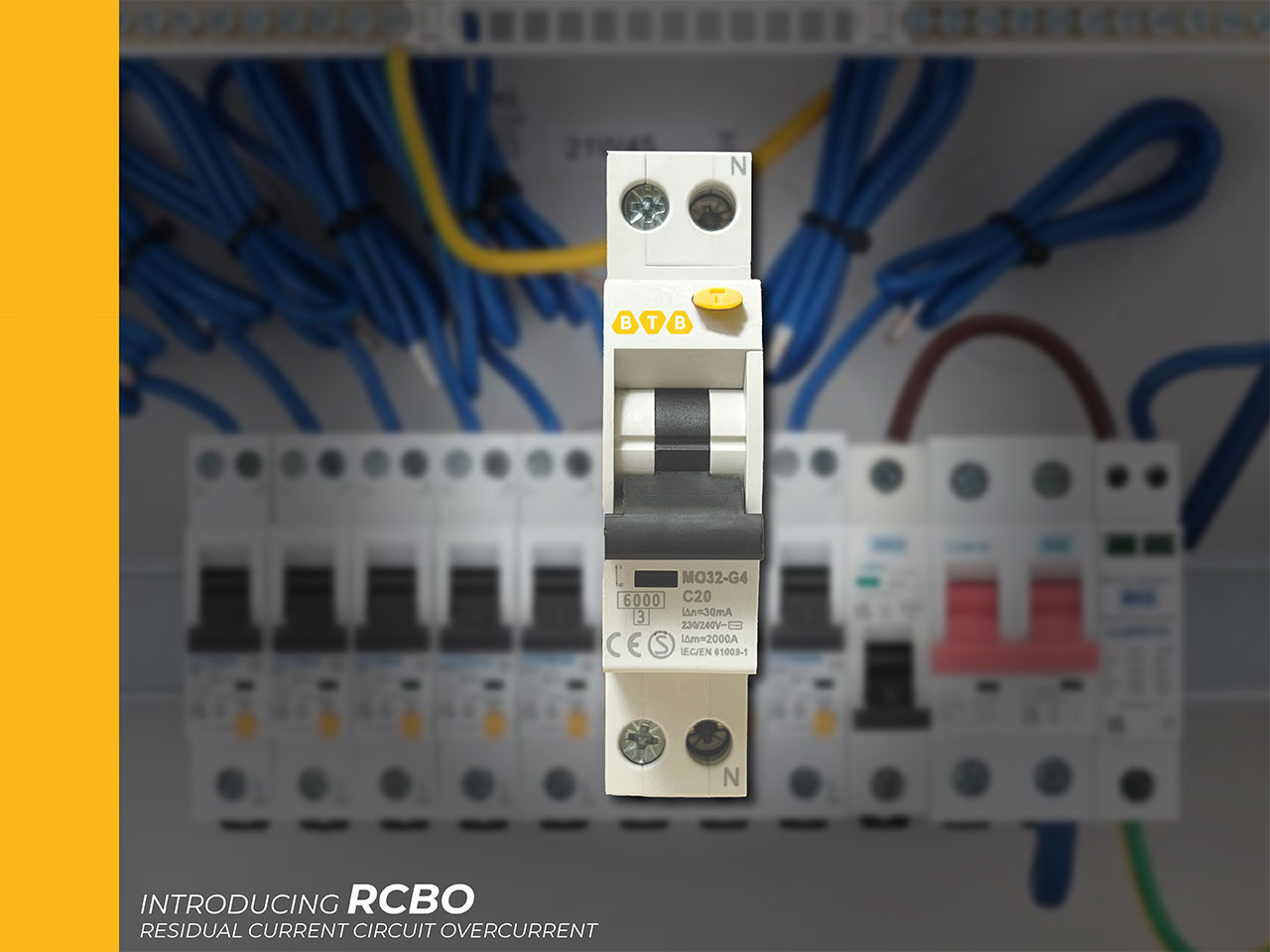
RCBO also has additional features of overload protection and short circuit protection. This anti-shock circuit breaker can be understood as a combination of RCCB – anti-leakage circuit breaker and MCB – clove circuit breaker to prevent overload and short circuit. The role of RCBO can completely replace MCB or RCCB in the electrical circuit. In general, RCBO protects the electrical circuit to always operate safely and early eliminate risks to the electrical system and people.
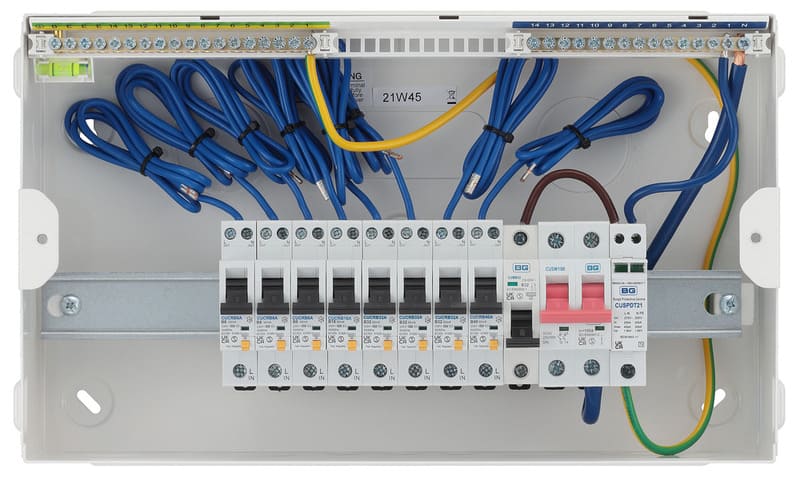
RCBO includes 2 main types: 1-phase 2-pole and 3-phase 4-pole. In particular, 1-phase 2-pole RCBO is commonly used in civil power networks and 3-phase 4-pole RCBO appears in industrial production power systems. The leakage current thresholds of RCBO are 10mA, 30mA, 100mA, 300mA or higher respectively.
Structure of RCBO anti-shock circuit breaker
RCBO circuit breaker is combined from MCB and RCCB, so the structure is also inherited from these two devices. In RCBO, the two most important parts are the ARC divider, which handles overloads and short circuits, and the RCD circuit board, which handles leakage current. In addition, RCBO has other components such as:
- Thermal Overload detection: The part that detects the risk of thermal overload.
- Manual switch: Switching and converting equipment.
- RCD test button: Leakage current test button.
- Short circuit detection coil: Short circuit detection coil.
- RCD toroid – Toroidal RCD: Leakage current sensing part in the RCD.
ARC divider arc extinguishing chamber
In the design of an arc extinguishing chamber, metal plates are assembled and create a space in the middle to extinguish and cool the arc. The arc location needs to be carefully selected and isolated with appropriate materials to ensure safety. At the main contact point, an arc is generated.

There are two main types of arcs:
- Semi-closed arc
- Open arc
Both types have differences such as air vents and MCB’s sealed cover. Open arcs can withstand voltages as high as 1000V and use larger voltages up to 50KV, while semi-closed arcs can withstand lower voltages.
RCD circuit board
RCD is the abbreviation for Residual Current Device, a device that automatically disconnects the electrical circuit when it detects an imbalance between the current intensity in the hot wire pair and the ground wire. This component is simply constructed with a magnet coil and two electrical wires running through the inside of that magnet coil. When there is a difference in current between the two wires, the magnet will detect and automatically interrupt the circuit.
RCBO is a multi-purpose anti-shock, overload and short circuit circuit breaker. Therefore, important parameters of RCBO include:
- Current intensity (In): Maximum current intensity that the RCBO can operate in a certain period of time. RCBO has In range from 6A to 63A.
- Leakage current interrupt level (IΔn): Minimum leakage current threshold that RCBO can detect to interrupt the circuit. The IΔn range of RCBO is 10mA, 30mA, 100mA, 300mA and 500mA.
- Response time: Time from when the RCBO detects leakage current to when the circuit is turned off.
- Number of poles: includes 1P+N and 3P+N. RCBo must have 1 N pole for ground wiring.
The RCD circuit board is the most important device in the other anti-shock circuit board, the RCCB.
Operating principle of RCBO
RCBO has 3 working principles: overload protection, short circuit protection and leakage current protection:
The RCD in the RCBO is responsible for monitoring the balance between the phase wire current and the ground wire current flowing through. Leakage current is generated when there is a current difference between the two wires. If large enough, it will affect the magnet in the RCD and disconnect the contacts, making it impossible for current to pass through the RCBO.
- Overload and short circuit protection
When closing the RCBO, the internal contacts are closed thanks to 2 joints No. 2 and No. 3, linked to a moving contact assembly including springs and magnets. When RCBO is closed, magnets number 4 and number 5 do not attract each other. In case the circuit is overloaded or short-circuited, these two magnets will attract each other, causing hook number 3 to pop off hook number 2, causing spring number 1 to relax, interrupting the circuit.
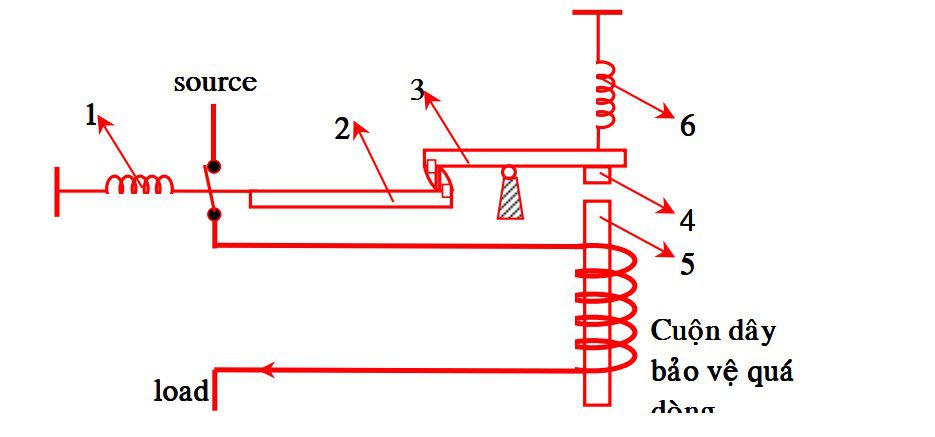
The combination of the above two operating principles helps RCBO function both as MCB and as RCCB.
See more: Compare RCBO and RCCB – Similarities and differences
Common types of RCBOs
There are two types of RCBO commonly used: type 1P+N for 1-phase circuits and type 3P+N for 3-phase circuits. These two types of RCBOs are similar in terms of installation, most specifications and features. The leakage current interrupt levels of these two types all have thresholds of 10mA, 30mA, 100mA or higher than 300mA, 500mA. When the detected leakage current exceeds this cutoff threshold, the current will be disconnected from the load by the RCBO.
The difference between RCBO 1P+N and RCBO 3P+N is when installing: type 1P+N is installed for 1-phase circuit, so only connect 1 phase wire and 1 neutral wire; Type 3P+N installed in 3-phase circuit should connect 3 phase wires and 1 neutral wire.
Read more: Distinguish between MCB, MCCB, RCCB, RCBO, ELCB, RCD and ACB
Application of RCBO in practice
RCBO is the perfect choice for protecting electrical circuits from overloads and short circuits in home, commercial and industrial electrical systems. Because it is integrated between the RCCB’s anti-leakage function and the MCB’s overload and short circuit function, the current Electric circuit breaker This helps to increase control of the frequency of electricity use and automatically disconnect power when there is a problem, thereby preventing the risk of fire. Therefore, this line of circuit breaker is a space and cost saving solution compared to using both individual CB lines on the same circuit.
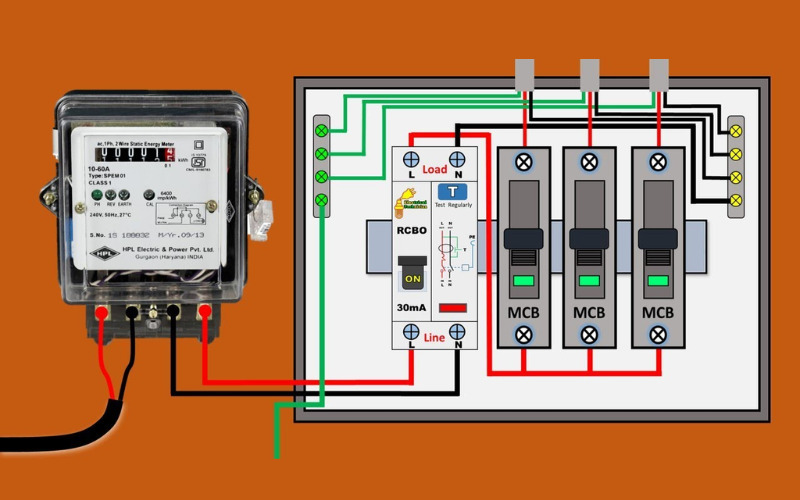
RCBOs are also ideal for sensitive electrical equipment and circuits that require precise protection. RCBO circuit breakers can be adjusted to detect earth leakage currents and line currents early, protecting critical equipment and minimizing the risk of failure.
In addition to being integrated into circuit boards, RCBOs are also widely used in high-power electrical equipment such as water pumps, grinders, cutters and drills to prevent the risk of direct electric shock and protect users. With a rated leakage current threshold of 10mA, RCBO does not affect the operation of electrical equipment.

You can choose from a variety of RCBOs to suit your specific needs. There are 6 main types based on curve characteristics, including S, AC, A, F, C and B. Each type is designed to meet unique requirements:
- RCBO type A is used for DC current with pulses up to 6mA.
- Type F RCBO used for dishwashers, air conditioners, washing machines,…
- Type B RCBO can be installed in 1-phase and 3-phase circuits, used for welding machines, escalators, elevators, inverters and photovoltaic systems,…
In addition, RCBO is also applied to specific devices with leakage currents up to 300mA, for the purpose of protecting and preventing fire risks in cases where these devices encounter risks such as in humid environments or at risk of fire.
Compare RCBO with MCB and RCCB
RCBO and RCCB are both circuit switching devices with the ability to detect leakage current. MCB alone is a common overload protection circuit breaker. Because it is integrated from MCB and RCCB, RCBO has a small circuit board design. Therefore, the function of RCBO is a combination of the anti-shock ability of the RCCB and the anti-overload and short-circuit protection of the MCB. In civil electrical circuits, using RCBO is a perfect replacement for RCCB and MCB connected in series.
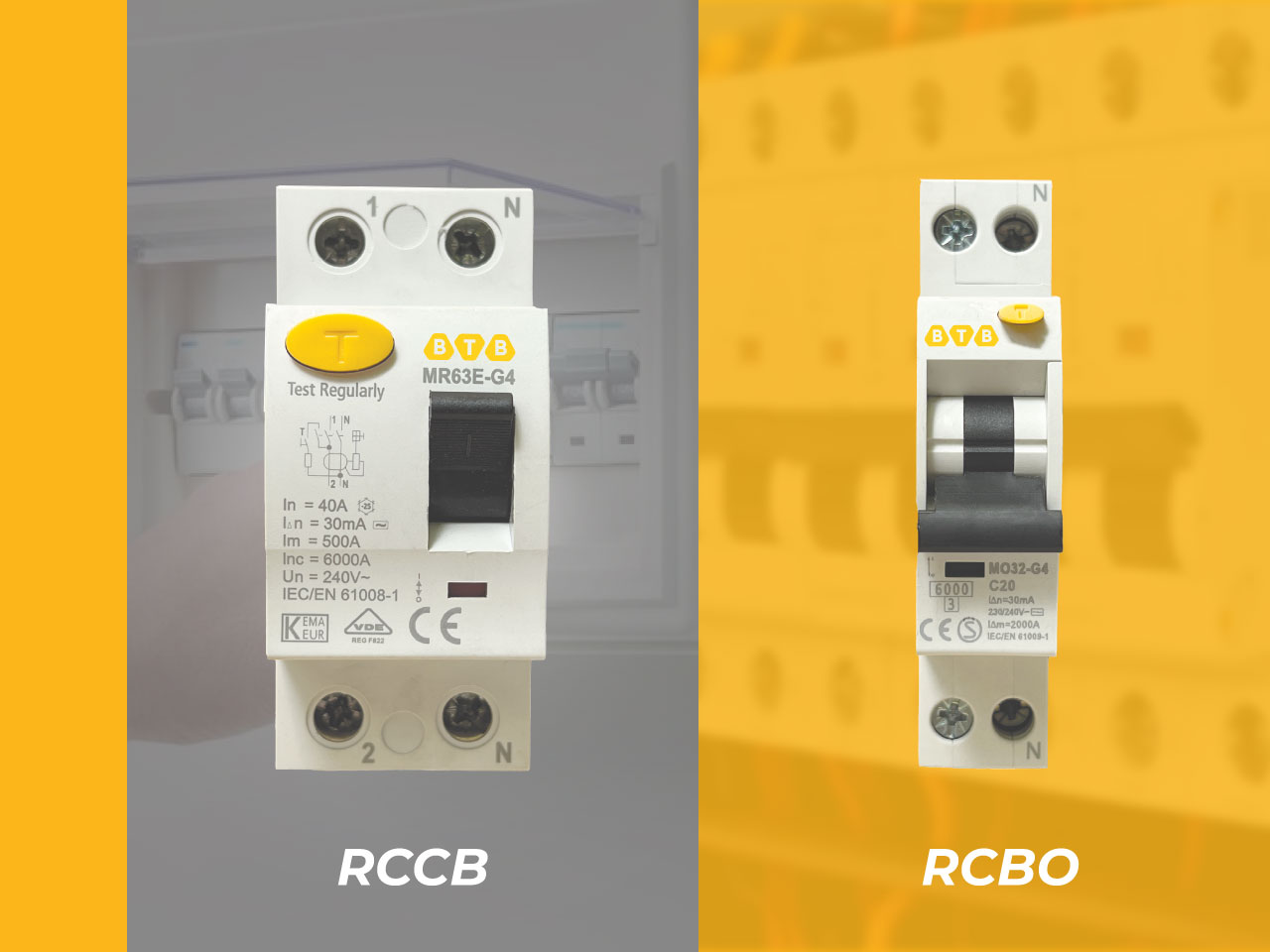
See detailed comparison article at: Comparison of RCBO and RCCB – Similarities and differences
Is RCBO different from ELCB?
RCBO and ELCB are both circuit switching devices with the ability to detect leakage current or protect against short circuit and electrical overload. The first difference between the two devices is in design. Because it is integrated from MCB and RCCB, RCBO has a small circuit board design. ELCB is developed from MCCB so it has the form of block circuit breaker.
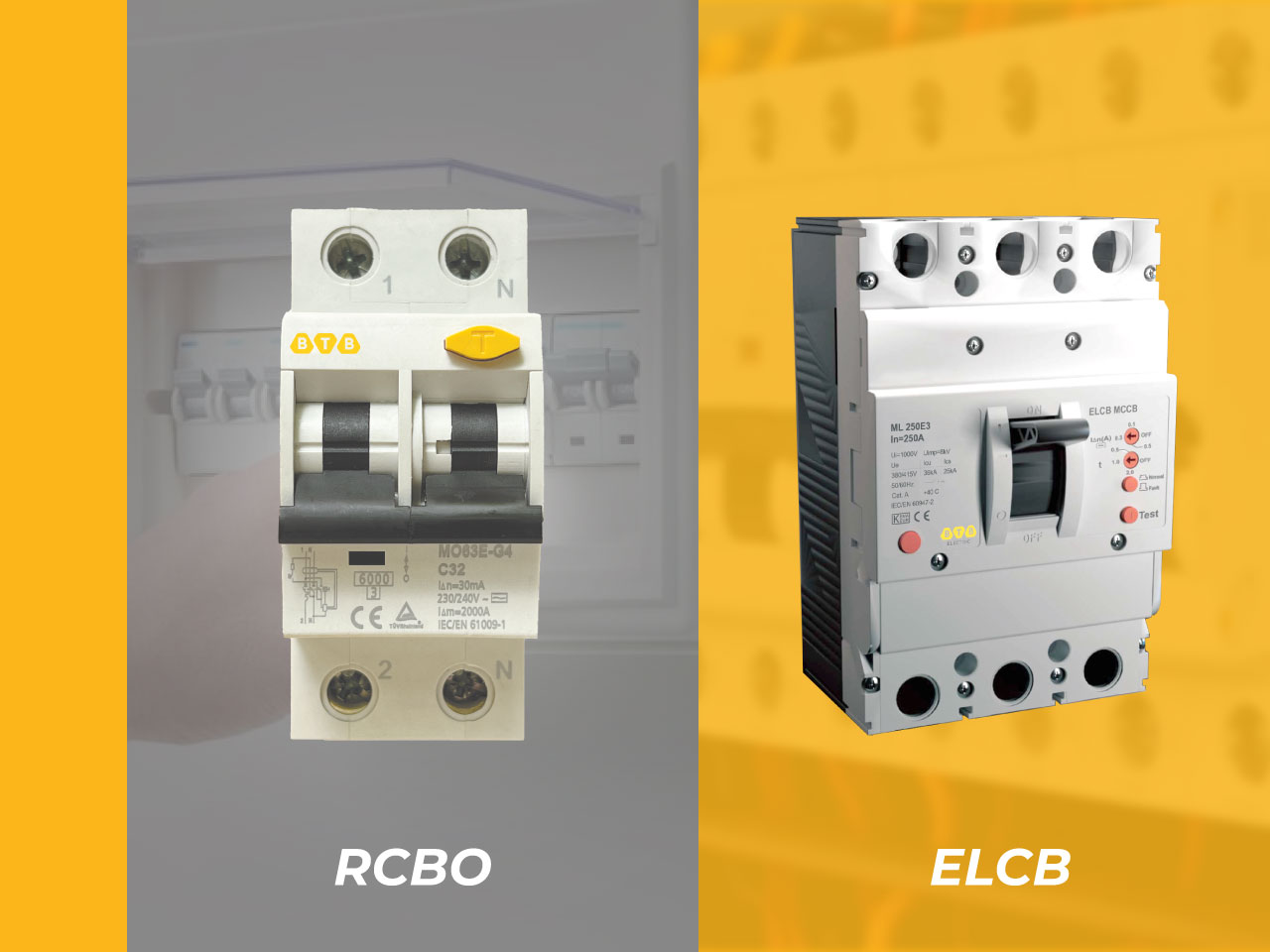
The function of RCBO is quite similar to ELCB which is to prevent leakage current, however the operating principle is different. The ELCB detects leakage current flowing through the ground circuit and interrupts the circuit. RCBO calculates the amount of residual current on the two phase and neutral wires and then disconnects the circuit. Therefore, ELCB has better shock resistance than RCBO. However, depending on the electrical circuit conditions, you can flexibly choose one of these two devices.
For detailed comparison of the two devices, you can see: Comparison of ELCB and RCBO
RCBO installation instructions
There are two cases when installing RCBO into the system: installation to complete or installation to supplement. In case of complete installation, proceed with the installation similarly How to connect anti-shock circuit breaker. When installing additionally into an existing system, be sure to place the main RCBO circuit breaker in series after the main circuit breaker. Before installation, you need to equip necessary tools such as an electrical tester, screwdrivers, pliers, insulating gloves,…
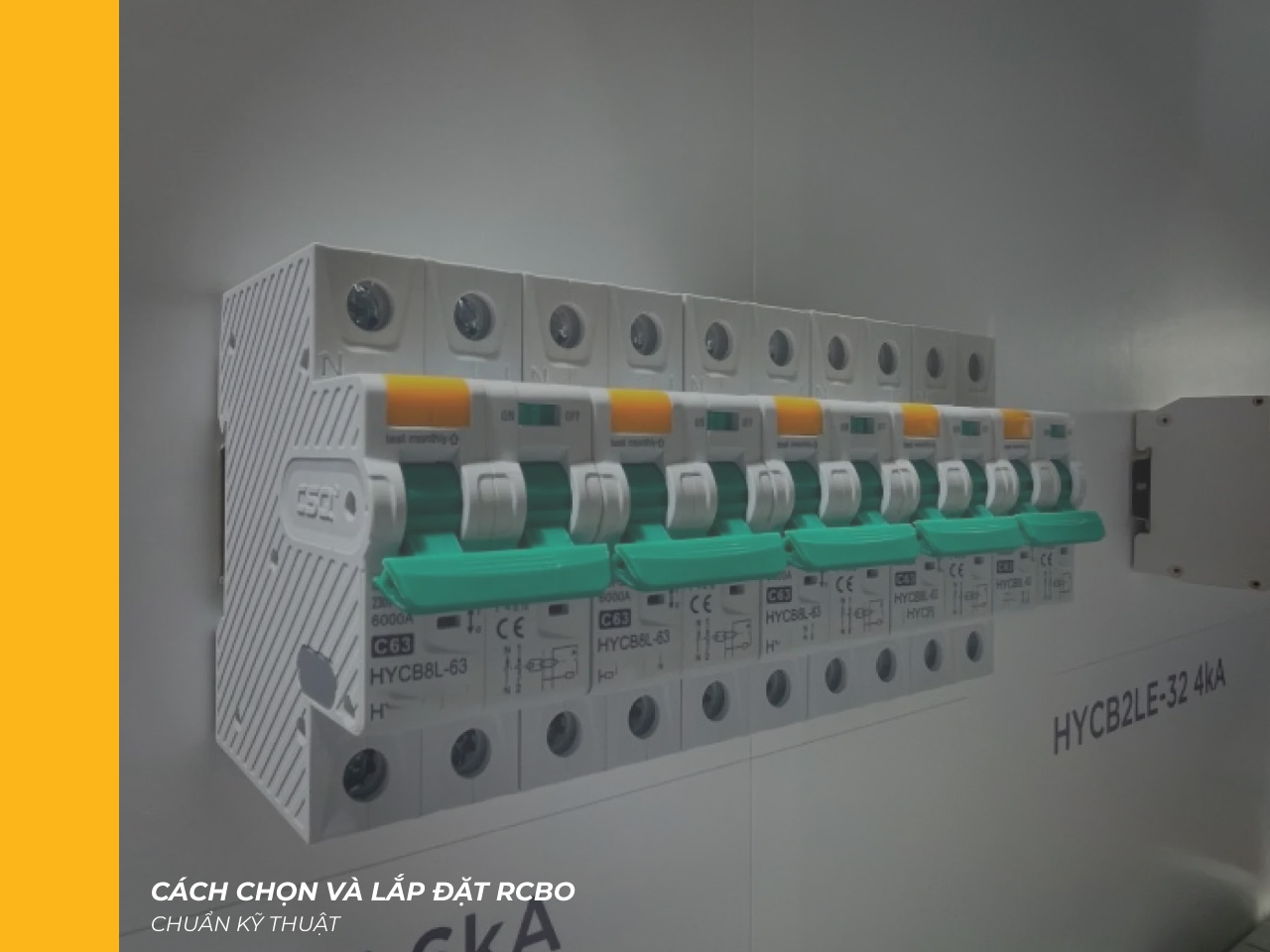
The steps to install RCBO are as follows:
- Step 1: Disconnect the power source through the connection wire and notify people around you. Then take an electric tester and check to make sure there is no more power before starting to connect the RCBO.
- Step 2: Screw the RCBO into the electrical panel or electrical cabinet depending on the actual situation. Place the line end (connected to the source) above and the load end (connected to the load) below. Be sure to tighten the screws tightly and check again by hand.
- Step 3: Wire the 2 RCBO inputs. Note that the phase wire (usually red) is attached to the L pole of the RCBO, the neutral wire (usually blue) is attached to the N pole. Do not mix the wires and poles together because then when the RCBO is energized, it will immediately short circuit.
- Step 4: Check the electrical specifications of the RCBO, making sure you install it according to the instructions. If the system has a ground wire, it needs to be connected to the load’s shell and then grounded.
How to check RCBO after installation
After connecting the RCBO, you need to check the safety and stable operation of this circuit breaker. There are 2 ways to check the RCBO: using the test button on the front or connecting the load. The test button method is the fastest and most accurate, while the load method needs to be performed by an electrical engineer with adequate equipment.
Test the RCBO with the test button
Most RCBO models are equipped with an external test button, marked with the letter “T” or “Test”. This button is recommended by the manufacturer to be tested periodically once a month.
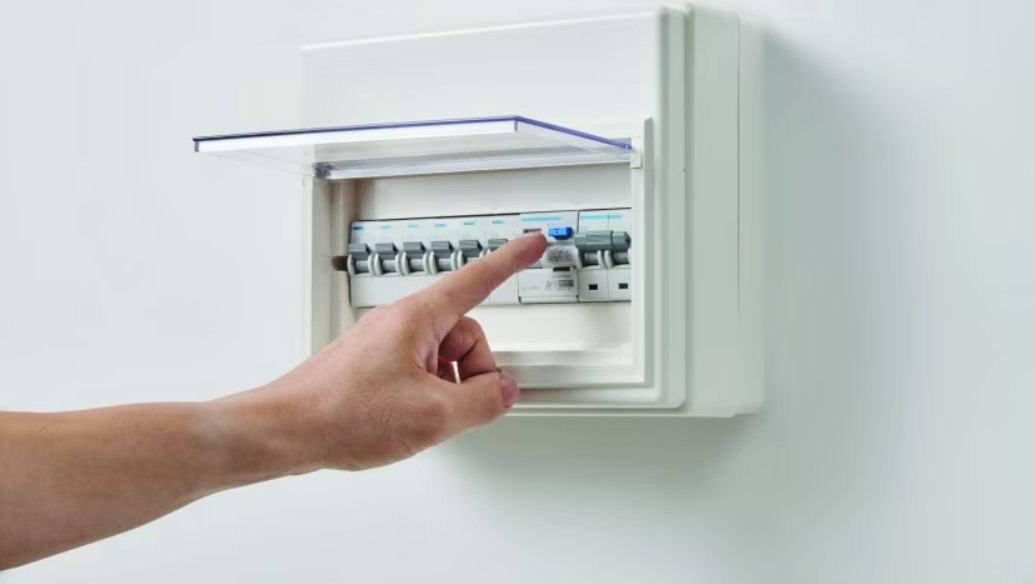
The test button has the function of checking the anti-shock feature on the RCBO. When the power is turned on, you press this button and the RCBO cuts off the power immediately, the device is operating normally. If it does not disconnect, the RCBO has an anti-shock error and you need to replace it.
Check RCBO with external load
If you have electrical knowledge, you can perform the following steps to test RCBO circuit breaker with external load. Do not connect the neutral wire of the load to the circuit breaker, but connect it through an intermediate switch and connect the hot wire of the load to the external load and measure with a milliampere meter. Then you turn on the power. If the RCBO automatically disconnects power, it is operating normally. Along with that, to calculate the current in the load, you need to calculate the current used by the load in advance and observe it on the milliampere meter.
For details on steps and notes when checking, please see: Instructions for testing anti-shock CB accurately and safely
Notes when choosing RCBO
Note about the RCBO installation environment: RCBO should be placed in dry and airy places, not exposed to direct sunlight or rainwater. Avoid placing RCBOs in damp locations such as in the bathroom, in the cooking area or outdoors. If you must install it in such locations, you need to choose an RCBO with high sensitivity (low leakage current threshold) and need a breaker box for protection.
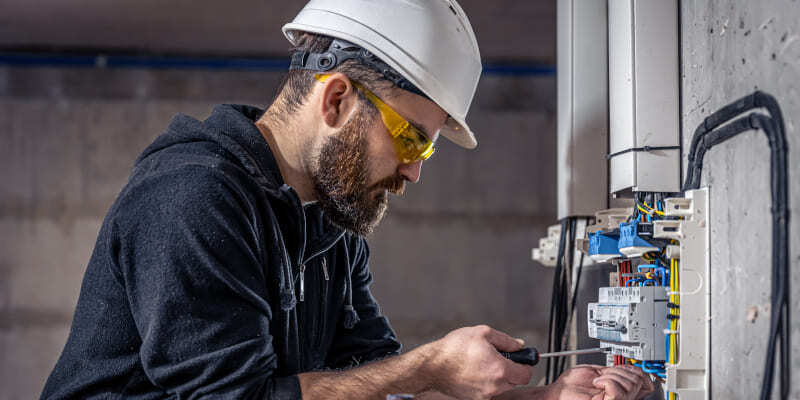
Note when the RCBO is wet: The RCBO may have stagnant water during the humid season. Then the current leaks out with the moisture and the relay will automatically turn off the power. Only when the air is dry can the RCBO be closed. If the leakage current is still safe for humans, you can choose a higher leakage current threshold RCBO to avoid the phenomenon aptomat jump.

Note when checking RCBO: You should check RCBO with the test button periodically, at least once a month. You should not perform other testing methods if you are not knowledgeable about electricity and do not have the necessary equipment.
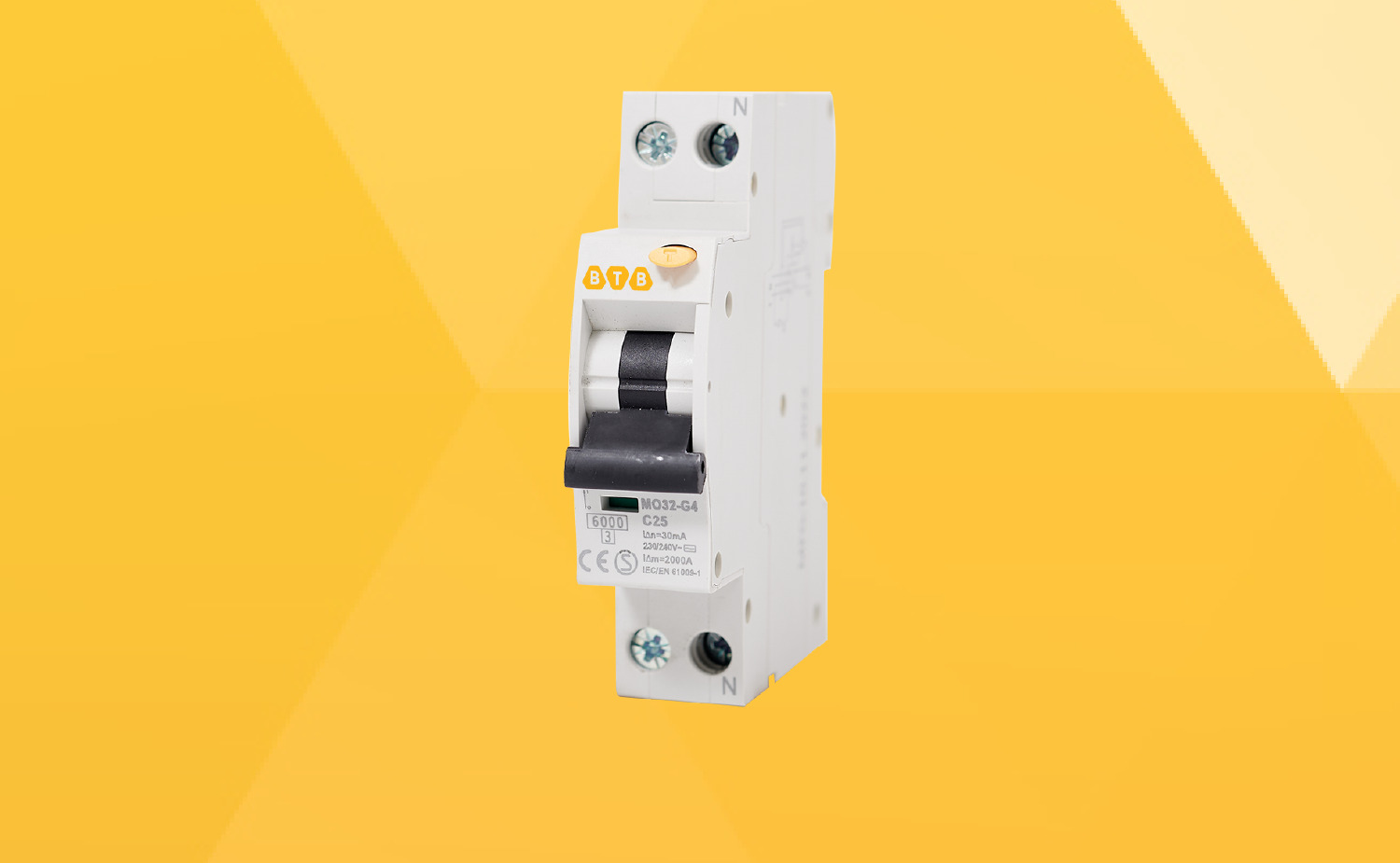
RCBO brand KTH ELECTRIC is high quality equipment under the globally prestigious KEMA – KEUR brand. The product is a 2-pole circuit breaker with rated current 6A – 63A and maximum cutting current 6kA. Refer to detailed technical specifications and product drawings at: https://btb-electric.com/vi/rcbo/


Nội dung được phát triển bởi đội ngũ truonglehongphong.edu.vn với mục đích chia sẻ và tăng trải nghiệm khách hàng. Mọi ý kiến đóng góp xin vui lòng liên hệ tổng đài chăm sóc: 1900 0000 hoặc email: hotro@truonglehongphong.edu.vn